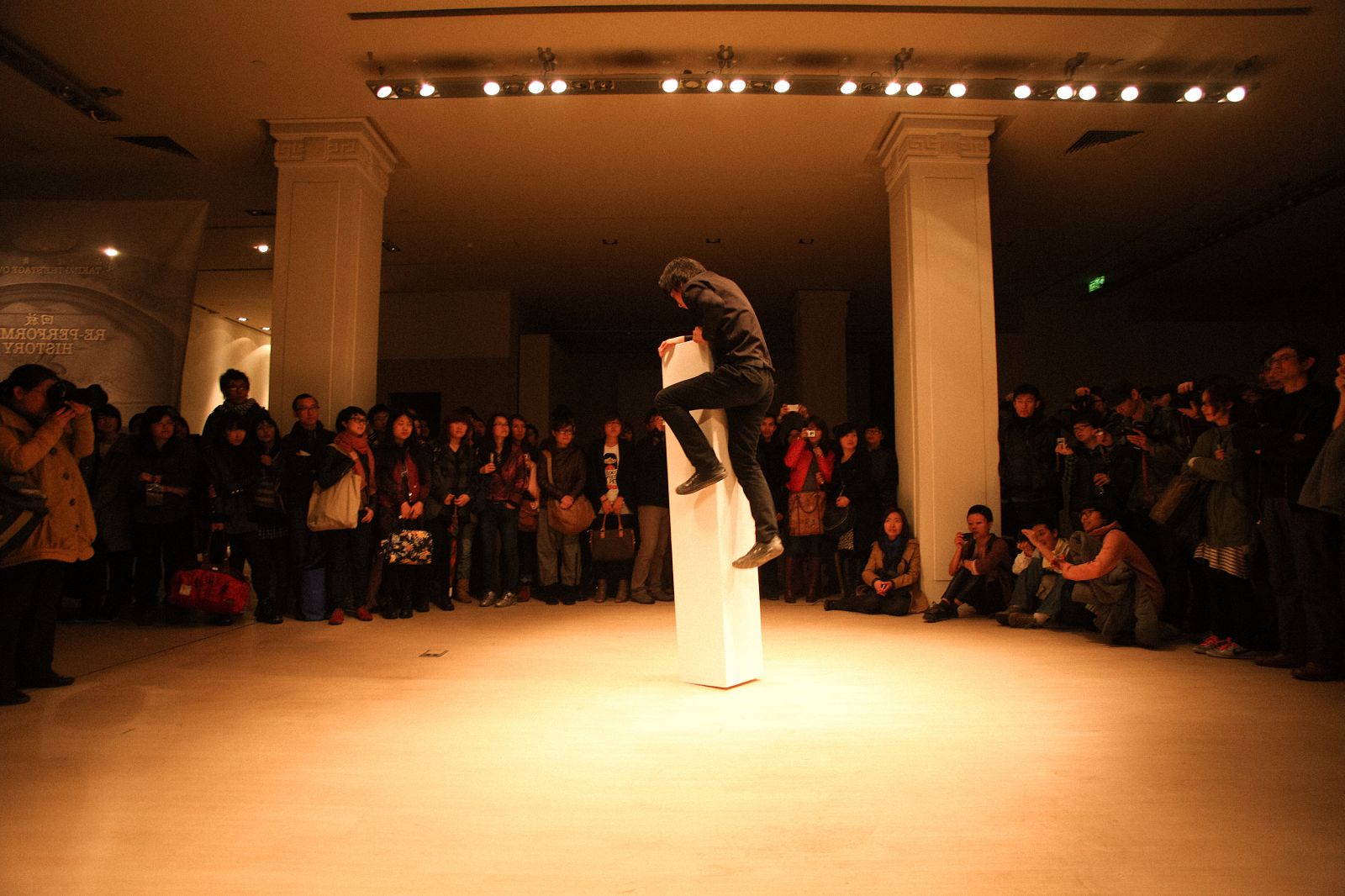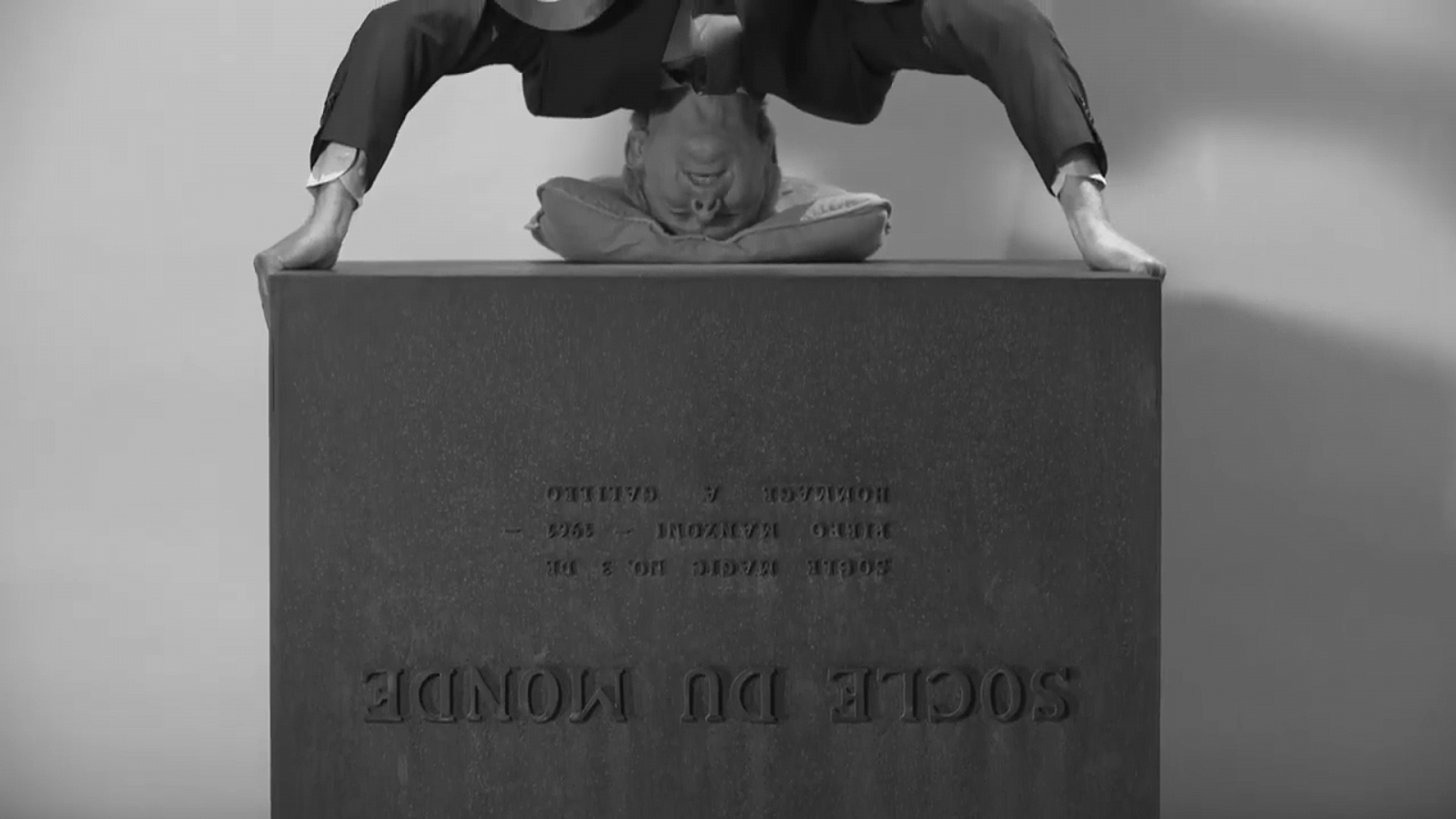1961-2011-2021
Does placing a past work of art in today’s environment produce new meanings? Theorists have developed at least two different answers to this question. In the mid-1980s, the global circulation of commodities prompted some anthropologists to notice that objects can take on entirely different social meanings at different moments in their lives. Arjun Appadurai observed, “Today’s gift is tomorrow’s commodity. Yesterday’s commodity is tomorrow’s found art object. Today’s art object is tomorrow’s junk. And yesterday’s junk is tomorrow’s heirloom.”1Arjun Appadurai, “The Thing Itself,” Public Culture 18, no. 1 (January 2006): 5-21 (5). This viewpoint deconstructs the belief in Western modernity that only mankind has agency, and that objects have no lives of their own. However, in The Ghosts of My Life (2014), the late British cultural critic Mark Fisher used hauntology to critique the constant recycling and reuse of old readymades in contemporary culture, particularly club music. He once said, “Culture in the twenty-first century is to have twentieth-century culture on higher definition screens […] or distributed by high-speed internet.”2“Mark Fisher: The Slow Cancellation of the Future,” 3:38-3:54, link. Fisher offered an example: if you gave music from the 2000s to music fans from the 1970s or 1980s, they would be surprised that these songs from the future offered nothing new. Their familiarity would be quite jarring, producing a sense of déjà vu. It is not difficult to imagine that if Mark Fisher were to critique contemporary art today, he would certainly have focused on two aspects: technical improvements in spite of a complete lack of newness.
Is displaying similar readymades again simply filling an old bottle with new wine or does it compel people to notice the social lives of readymades? In 2011, the critic Biljana Ciric planned an exhibition that posed historical questions once more. Her show Taking the Stage Over: Reperforming History invited artists to respond to past performances through their own live performance works. The piece that people may most remember from that show was Tang Dixin’s real-life reenactment of Yves Klein’s Leap into the Void (1960). Lu Pingyuan’s Readymade (2011) also presents an event, showing that a live event can cause friction between the readymade and new networks of meaning, thereby changing the original.
Lu’s chosen readymade was Base Magica: Scultura Vivente (1961) by Italian artist Piero Manzoni (1933-1963). Manzoni claimed that his own body was a readymade, so he produced a platform with two footprints. According to the conventions of artistic appreciation, anyone who stands on it becomes a sculpture.
Lu Pingyuan revisits this earlier artist’s actions but transforms Manzoni’s 60-centimeter-high wooden platform into a plinth that is about Lu’s height and weight. In his live performance, Lu’s own height became an obstacle that he had to overcome. In the eight-minute-long performance, he tries and fails multiple times to climb up onto the base, and the plinth occasionally falls over with a thud. Of course, climbing onto a plinth is not something that you would normally see at an exhibition, but what is dramatic about it is the loud sound the plinth makes every time it topples, riveting the audience. When Lu puts the plinth back up and takes a rest, the plinth often looks like a doppelgänger for the artist and becomes almost personified. After he finally mounts the pillar, the viewers respond with wild applause.
Let’s return to Manzoni’s original work: the emptiness above the two footprints marks the absence of the artist’s body. Lu Pingyuan’s Readymade literally returns to the instruction to become a “living sculpture,” imitating Manzoni’s designation of his own body as a readymade. However, Lu’s exhausting performance is the opposite of Manzoni’s conceptual tendency, which does not require expending any physical energy. The difference between the two is a vague reference to the division between European intellectual production and Asian labor-intensive production. In responding to the original, Lu relies on tiny differences between their souls to change the original by switching the context. Through his exaggerated rhetorical flourish (making the plinth his height) and clumsy expenditure of physical energy, Lu becomes a readymade in a labor-intensive fashion.
If we consider that Lu Pingyuan’s work is similar to the first work he presented publicly, then, for him, becoming a readymade is much like becoming an artist. In this way, Readymade touches on the many meanings of a readymade. Readymades could refer to 27-year-old Lu or 28-year-old Manzoni, who made the living statue and gave the work a biographical quality; Manzoni died just two short years after producing this work. Now, the question arises: when Manzoni’s body is not present, can it be a readymade? What does Lu Pingyuan’s body count as? If we see a ghost as a readymade and really think about it, then Lu’s Readymade may be akin to Schrödinger’s cat.
The Readymade Strikes Back…
Returning to the two things that Fisher would have critiqued in contemporary culture—upgrades to display technologies and the complete lack of newness—I find Readymade to be a very effective response to these concerns. If we want to place old materials in new meaning networks and produce frictions, we can create an immeasurable cat state. The body standing on a 170-centimeter platform is Manzoni’s shadow and Lu himself; a readymade can also be a living, site-specific art performer. Multiple figures rapidly flash through viewers’ minds. Evidently, Lu Pingyuan’s response is connected to Appadurai.
Rereading this live performance from ten years ago in today’s context, it reminds us that the social life of things transforms past issues into present actions, which can produce new social relationships and spaces, as well as entirely different meanings. If we return to the video, Lu’s physical labor may run counter to Manzoni’s concept of the readymade. In this sense, Lu Pingyuan’s 2011 remaking of that 1961 readymade reveals the ghost of the author behind the work’s concept. Manzoni’s formulation of the readymade increases a sense of exclusivity and ownership, and by disparaging the value of labor, it absorbs the outcomes of other people’s work. This primitive accumulation in modern art history runs parallel to modern history. If we want to rename the awkwardly titled readymade, there is a Schrödinger-adjacent possibility: “The Unreadymade.”3Joshua Simon, “Neo-Materialism, Part II: The Unreadymade,” e-flux Journal, March 2011, link.
Translated from the Chinese by Bridget Noetzel.
Zian Chen is a curator and co-editor of Heichi Magazine.
Bridget Noetzel is a translator, editor, and art consultant based in Hong Kong. She received a BA in both Chinese Language and the History of Art from Yale University. Since 2009, she has worked with galleries and artists in Beijing and Hong Kong, and she has translated and edited for major publications, institutions, and auction houses. In 2017, she co-founded the Asia Photography Project. She was the translator for Yi Ying’s history of modern Chinese art, entitled Art and Artists in China 1949-Present (Cambridge University Press, 2018).


